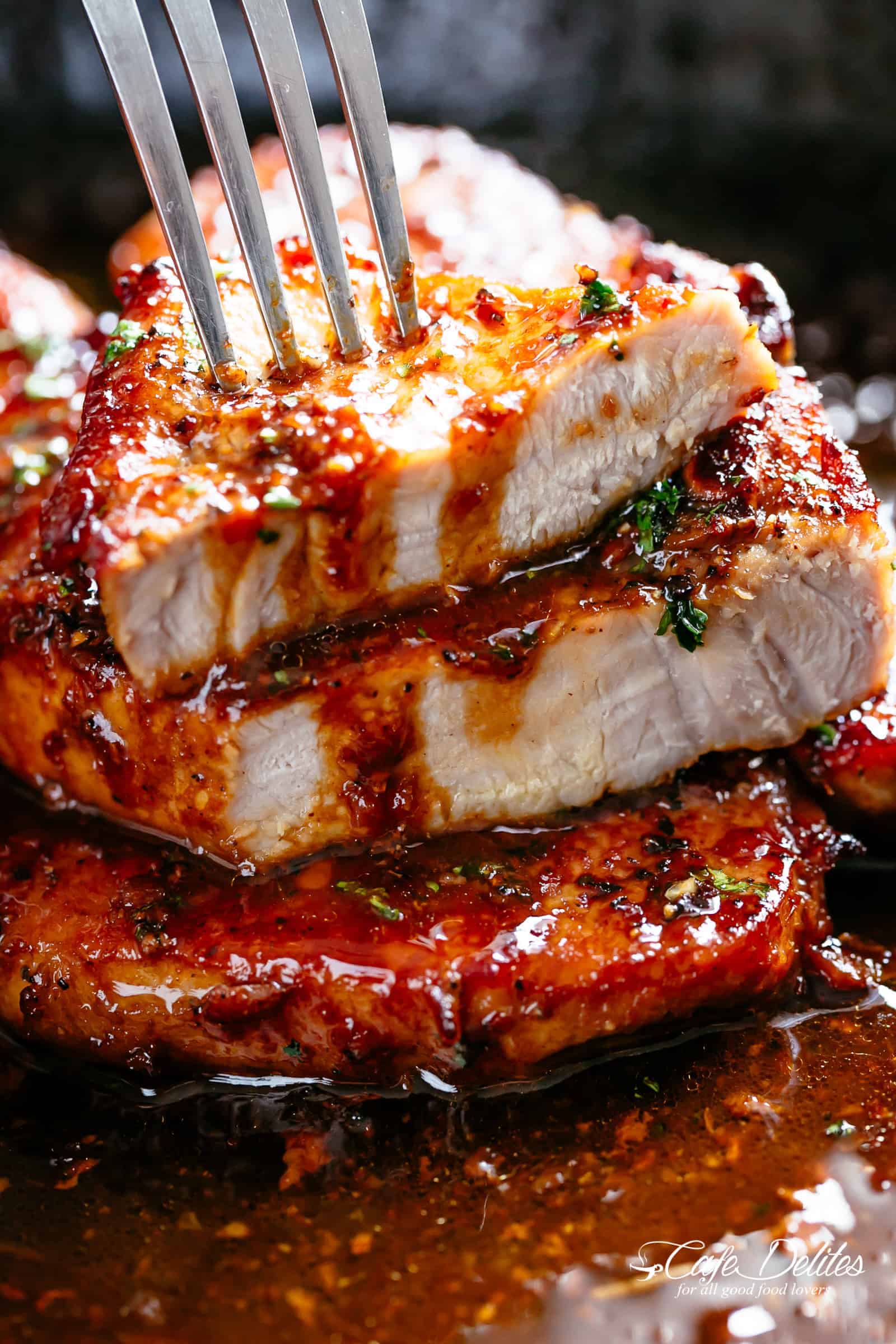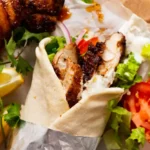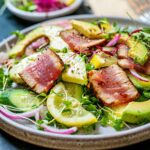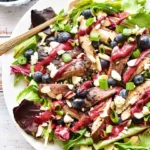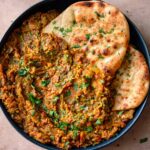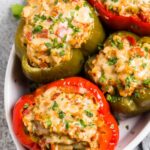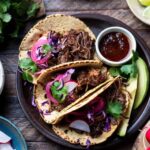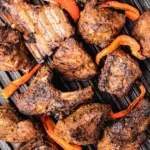Guyana boasts a rich culinary heritage shaped by its diverse cultural influences. From indigenous flavors to Afro-Caribbean, Indian, and British colonial impacts, you’ll find a variety of dishes that are as unique as they are delicious.
Exploring Guyanese cuisine offers you a chance to experience this blend of cultures through mouthwatering recipes that you can try at home. Whether you’re looking to savor hearty stews or light, flaky bread, these 16 foods from Guyana will delight your taste buds and broaden your culinary horizons.
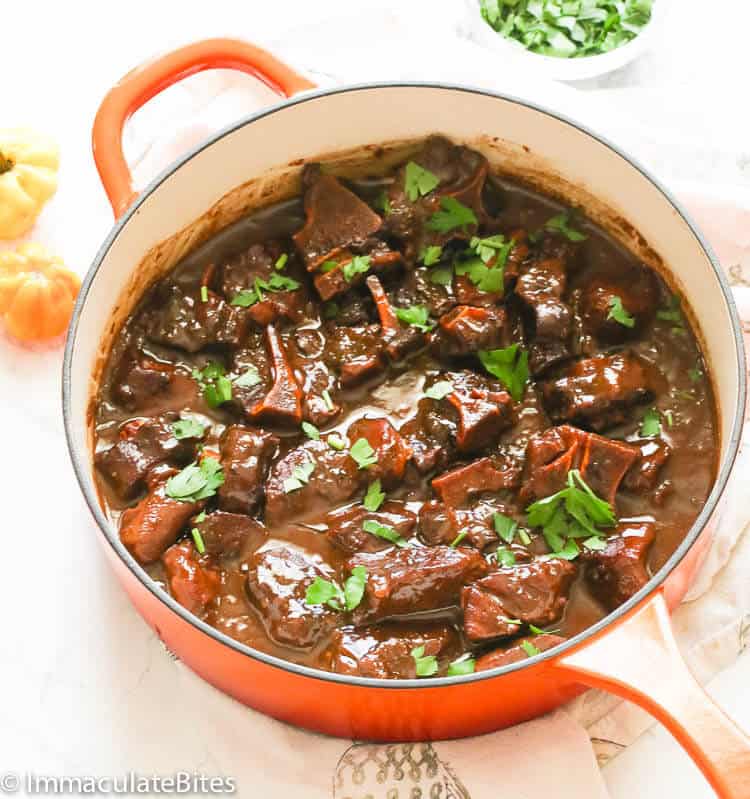
1) Pepperpot
Pepperpot is a rich and hearty meat stew, often enjoyed during holidays and special occasions in Guyana. It’s known for its deep flavor, sticky texture, and dark color.
To make pepperpot, start by preparing your meats. This typically includes beef, pork, and sometimes oxtail or cow foot. Wash and season the meats with salt and other spices.
Next, you’ll need cassareep, a key ingredient. Cassareep is a thick, dark sauce made from the juice of cassava root. It gives pepperpot its unique color and taste.
In a large pot, heat some vegetable oil and brown the meats. Add chopped onions, garlic, and chili pepper to the pot. Stir them well to let the flavors meld.
Pour in the cassareep and add spices like cinnamon sticks, cloves, and thyme. Some recipes also include orange peel and brown sugar for added sweetness.
Cover the meat with water and bring the pot to a boil. Lower the heat and let it simmer for a few hours until the meat becomes tender. Make sure to occasionally check the water level and add more if necessary.
Enjoy your pepperpot hot, often served with bread or rice.
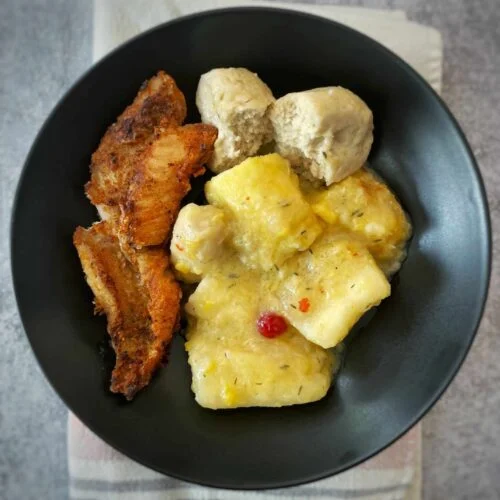
2) Metemgee
Metemgee is a traditional one-pot dish from Guyana. It combines a mix of root vegetables like cassava, sweet potatoes, yams, and plantains. These ingredients are cooked together in a rich coconut milk broth.
You start by sautéing onions and garlic, then add the vegetables. Spices such as thyme and black pepper bring out the flavors. Meats like chicken or salted beef often accompany the dish.
The dish also includes “duff,” which are wheat flour dumplings. These dumplings soak up the coconut milk, making each bite rich and fulfilling.
You can prepare Metemgee in one large pot, making cleanup simple. It is hearty and filling, perfect for family meals. It represents the blend of African, Indian, and Caribbean influences in Guyanese cuisine.
Traditionally, Metemgee is served with fried fish or saltfish. This combination adds an extra layer of flavor. The dish is treasured not just for its taste but also for its cultural significance.
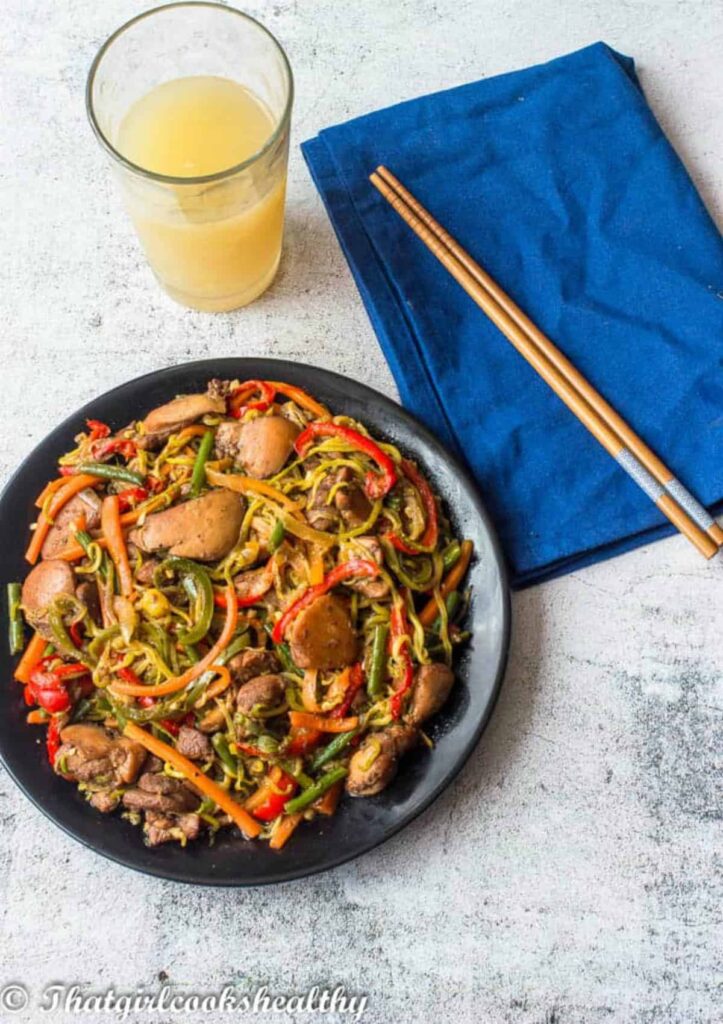
3) Guyanese Chow Mein
Guyanese Chow Mein is a popular dish made with noodles, chicken, and a mix of vegetables. It’s seasoned with a blend of flavorful spices, offering a rich and satisfying taste.
To start, you’ll need to cook chow mein noodles according to the package instructions. Rinse them with cold water to prevent sticking.
Season your chicken with olive oil, soy sauce, green seasoning, and salt. Sear the chicken in a hot pan until brown on both sides. Cook it through, which should take about 10-15 minutes.
Once the chicken is ready, sauté onions and garlic until they are soft. Add other vegetables like carrots, green onions, and cabbage. Stir fry for a few minutes until all the vegetables are cooked through.
Combine the cooked chicken, vegetables, and noodles in the pan. Toss everything together, making sure the flavors mix well.
If you like, you can add ginger and five-spice powder for extra flavor. Adjust the salt and pepper to taste, and your Guyanese Chow Mein is ready to serve. This dish is versatile and can be enjoyed as a main course for lunch or dinner.
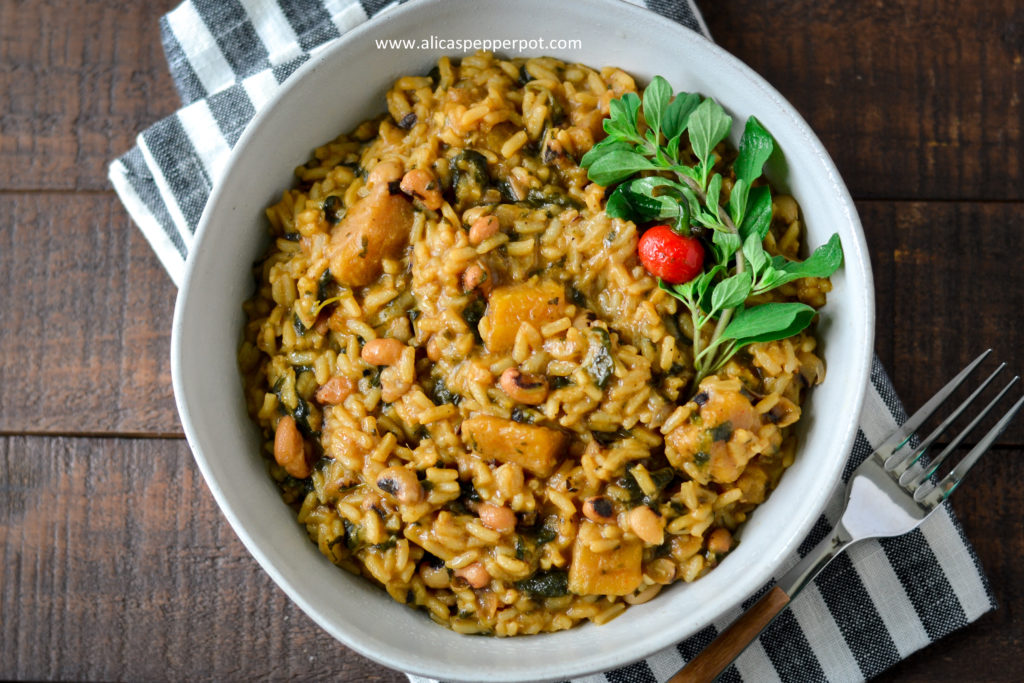
4) Cook-Up Rice
Cook-Up Rice is a popular dish in Guyana. It’s a one-pot meal that combines rice, beans, meats, and coconut milk.
To prepare Cook-Up Rice, you first clean and rinse the rice. This is an important step. You should rinse the rice until the water runs clear.
Next, you’ll start by cooking marinated meats. You can use a mix of salted beef, tripe, chicken feet, or even regular beef. Sauté until browned.
Now add the rinsed rice and beans to the pot. Common choices are red beans, pigeon peas, and chickpeas. Pour in water and coconut milk. Stir everything together well.
Add seasonings next. Old Bay seasoning, black pepper, bouillon, and some bay leaves add flavor to the dish.
Cook the mixture uncovered for about 20 minutes, stirring occasionally. Then, cover the pot and continue cooking for another 15-20 minutes until the rice absorbs the liquid and becomes tender.
In the end, your Cook-Up Rice should be creamy and well blended. This dish is perfect for family gatherings and special occasions. Enjoy!
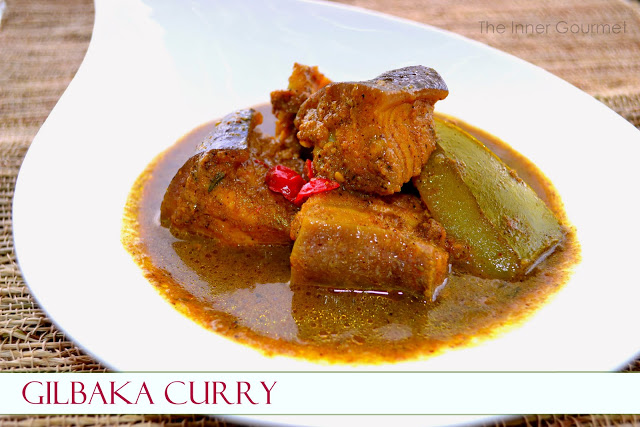
5) Fish Curry
Fish curry is a popular dish in Guyana known for its rich flavors. You start by heating oil in a wide-bottomed pot. Mix curry powder and masala with water to create a thick paste. Fry onions in the hot oil and then add the paste with some chopped tomatoes.
Let the mixture cook until the tomatoes are tender. Next, add your fish pieces to the pot. Use fish like Gilbaka or Sea Bass for the best results. Stir gently to coat the fish with the curry mixture.
Add boiling water and regular salt to the pot. This will help the flavors blend together. Cook for about 20 minutes, allowing the fish to absorb the spices. The result is a flavorful curry that pairs well with rice or bread.
For an authentic taste, serve your fish curry with a side of mango sour. This tangy condiment adds a refreshing kick, enhancing the rich flavors of the curry. Fish curry is a delicious and savory dish that showcases Guyanese cuisine at its best.
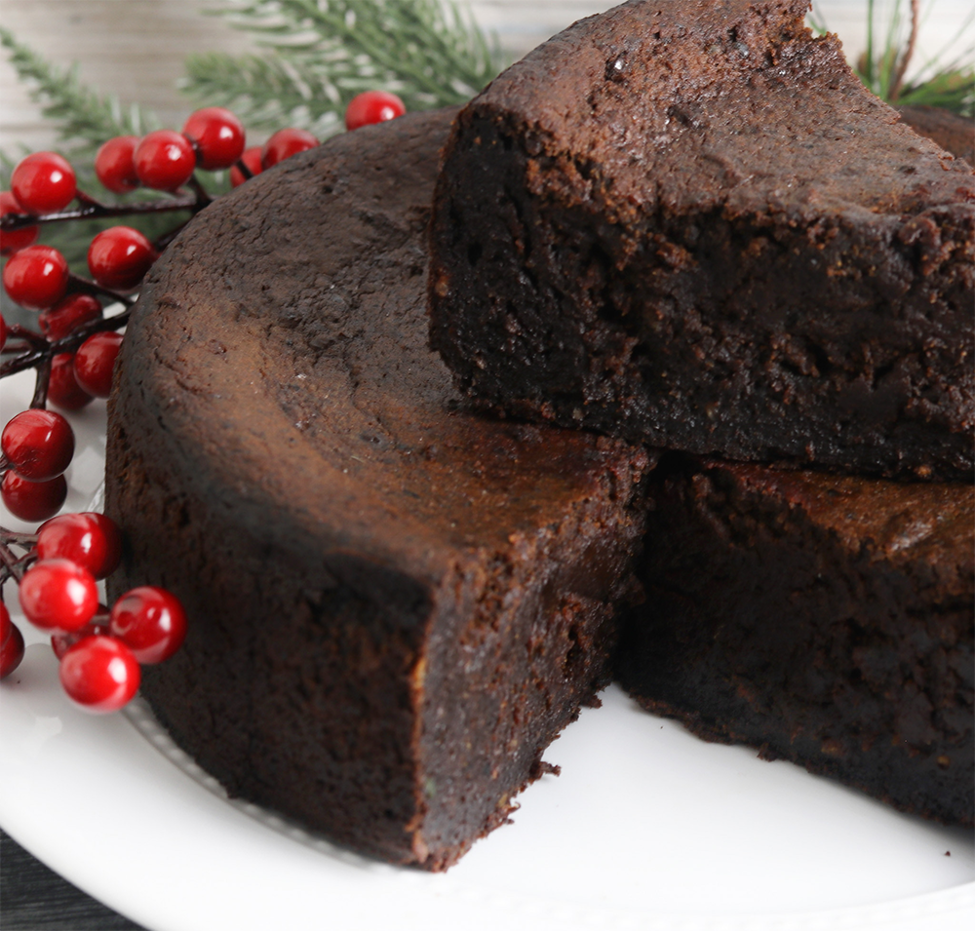
6) Black Cake
Black Cake is a beloved dessert in Guyana, especially during Christmas and weddings. The cake is dark, dense, and rich in flavor.
To start, you need to cream butter and sugar until light and fluffy. Gradually add beaten eggs, and mix well. This forms the base of the batter.
Next, incorporate soaked fruits in rum or wine. These fruits usually include raisins, currants, and prunes. Mix in enough caramel to achieve a deep, dark color.
Combine sifted flour, baking powder, and spices like cinnamon, nutmeg, and cloves. With each addition, fold the flour mixture into the batter in a figure 8 motion.
Preheat your oven to 300°F or 325°F based on different recipes. Grease and line your baking pans with parchment paper. Pour the batter evenly into the pans.
For a moist cake, cover the pans with foil initially. Bake for the first hour at 300°F, then reduce to 275°F and bake for 45 minutes to an hour more.
The result is a moist, flavorful cake that gets better with age. Slice and enjoy a piece of this traditional Guyanese treat.
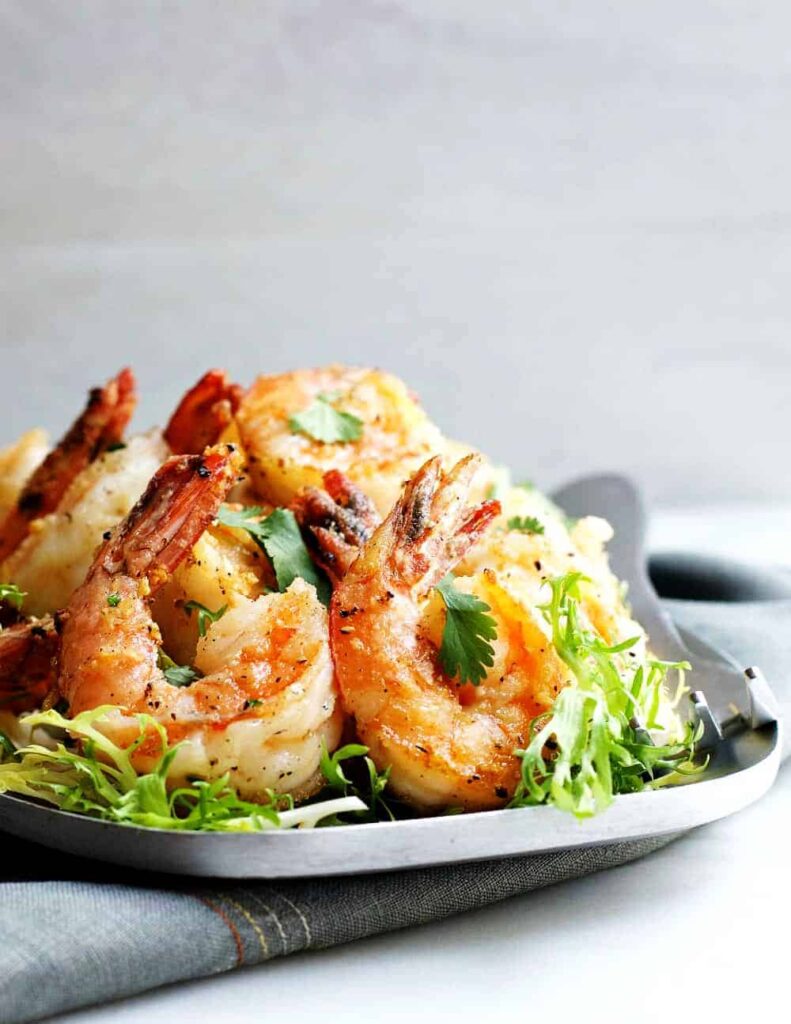
7) Pepper Shrimp
Pepper shrimp is a delicious and spicy dish from Guyana. It combines the natural sweetness of shrimp with hot peppers and a mix of flavorful ingredients.
To make pepper shrimp, first, clean and devein the shrimp. This ensures they are ready to absorb the flavors.
Next, you will need to prepare the cooking ingredients. Common ingredients include garlic, scallions, ginger, and a variety of hot peppers like Scotch bonnet or Bird’s Eye.
Heat some oil in a pan over medium heat. Add the garlic, scallions, and ginger, cooking them gently to release their flavors. Be cautious with the heat to avoid burning these ingredients.
Once they are fragrant, add the shrimp to the pan. Cook the shrimp until they turn pink and are just done. Overcooking can make them tough.
You can also add bell peppers and onions for extra crunch and flavor. Stir everything together, coating the shrimp well with the seasoned oil.
Pepper shrimp is usually served with fried rice or chow mein. Its spicy kick perfectly complements these dishes, making it a favorite in many Guyanese households.
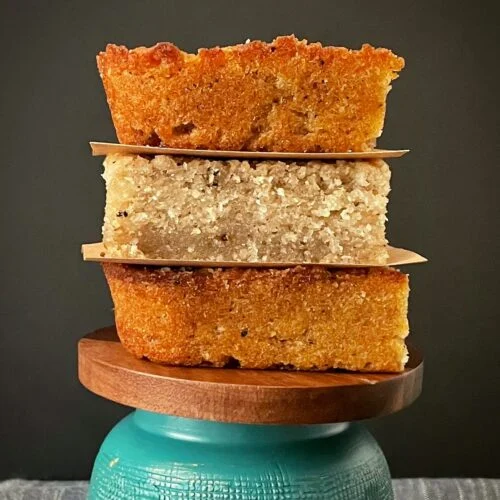
8) Cassava Pone
Cassava Pone is a popular dessert from Guyana. This sweet treat is made using grated cassava root, which gives it a chewy texture.
You will need a few ingredients. Start with 4 ½ cups of grated cassava. You can use fresh coconut or dried coconut flakes. Add ½ cup of grated coconut if you like.
Mix the grated cassava and coconut with 1 ½ cups of brown sugar. Then, add 6 tablespoons of softened butter for a rich flavor. Use non-dairy butter for a vegan option.
To the mixture, add ½ teaspoon of ground cinnamon and ½ teaspoon of ground nutmeg. These spices give the pone a warm and fragrant aroma. Add 2 teaspoons of mixed essence or vanilla extract. Finally, add 1 ½ teaspoons of almond extract.
Preheat your oven to 350°F (180°C). Line a 9×13 inch baking dish with parchment paper. Pour the cassava mixture into the pan and spread it evenly.
Bake the cassava pone for 40-45 minutes until the top is golden brown. Let it cool before slicing into squares or wedges. Enjoy your Cassava Pone warm or at room temperature.
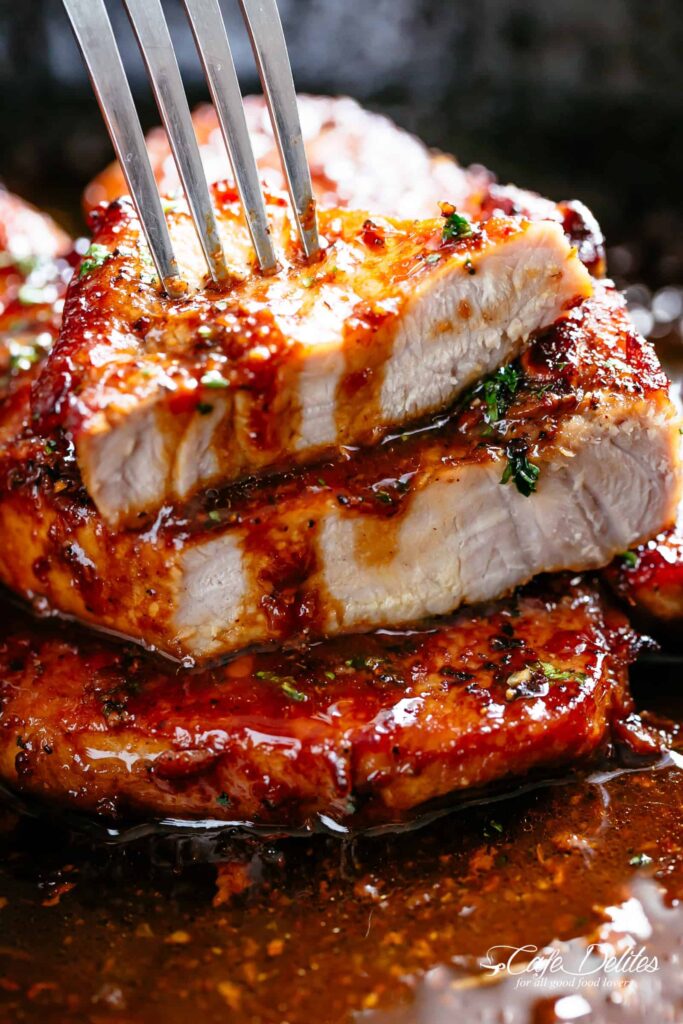
9) Garlic Pork
Garlic Pork is a popular holiday dish in Guyana, especially during Christmas. This savory, tangy dish is made by marinating pork in vinegar and a mixture of spices.
To make Garlic Pork, you start with cubed pork shoulder. It’s chosen for its ideal fat content, ensuring the meat remains juicy and flavorful. The pork cubes are mixed with garlic, thyme, and pepper for bold flavors.
Fresh garlic is crucial as it gives the dish a strong, memorable taste. Local spices such as wiri wiri peppers may also be added for an extra kick. Some recipes include additional ingredients like orange peel and cinnamon sticks for a unique taste.
The marinated pork is stored in jars and submerged in vinegar, which helps preserve it. When ready to cook, the pork is usually drained from the pickling liquid and then either broiled or pan-fried until golden brown.
Garlic Pork is often served with Guyanese plait bread, making it a complete and satisfying meal.
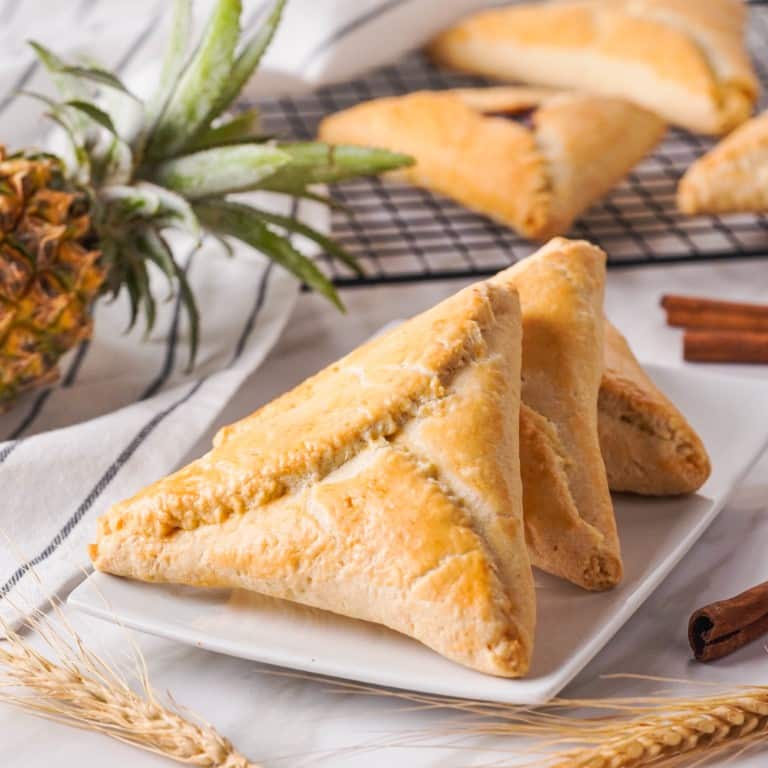
10) Pine Tart
Pine Tarts are a popular pastry in Guyana. They are filled with a sweet pineapple jam and have a flaky, buttery crust. You will often find them at local bakeries or made fresh at home.
To make Pine Tarts, start by preparing the pineapple filling. Simmer crushed pineapple with sugar until it thickens to a jam-like consistency. Let it cool completely.
For the dough, sift flour with some sugar and salt. Add cold butter and mix until it forms a crumbly texture. Add enough cold water to bring the dough together, then roll it out to about 1/8 inch thick.
Cut the dough into circles using a bowl or cutter. Place a spoonful of the pineapple filling in the center, then fold the dough over to form a triangle. Seal the edges with a fork.
Brush the tarts with an egg wash for a golden finish. Bake in a preheated oven at 350°F until golden brown. Let them cool before serving. Pine Tarts are perfect for a snack or dessert, loved for their delightful taste and texture.
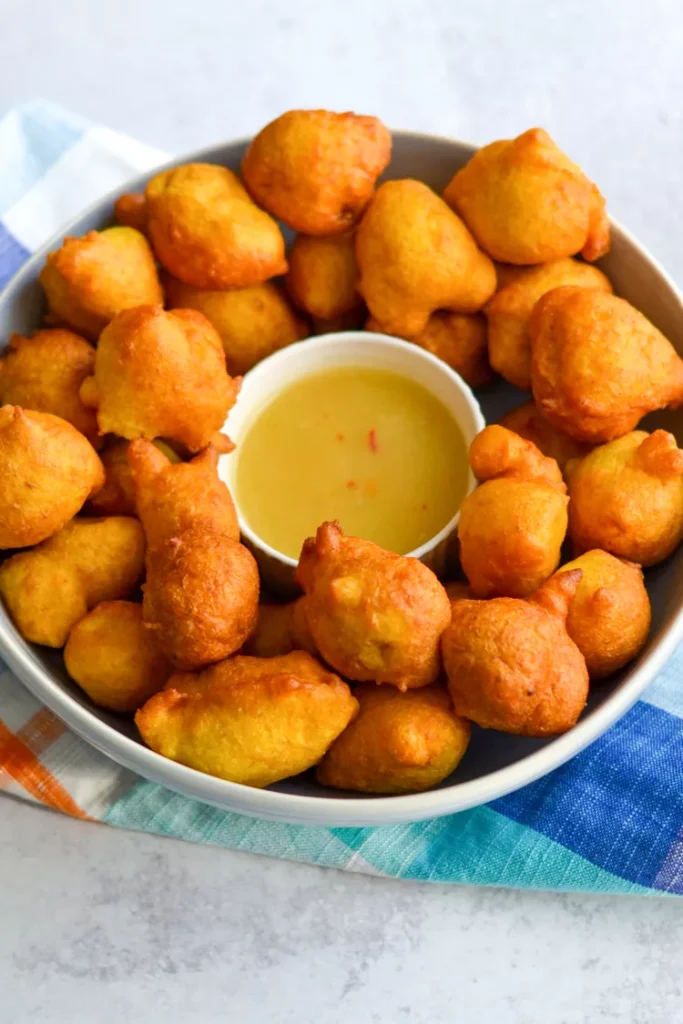
11) Pholourie
Pholourie is a popular Guyanese snack made from a spicy, seasoned batter. The main ingredient is split peas, which are soaked overnight. This makes them soft and easy to blend. Garlic, pepper, and other seasonings are added to the mix.
The blended mixture is then formed into small balls. These balls are deep-fried until golden brown. Be careful when dropping the batter into the hot oil to avoid splashes.
Pholourie is usually served with a dipping sauce. Mango sour is a common choice and complements the spicy flavor. You can also try different spicy sauces based on your preference.
This snack is often enjoyed at gatherings and celebrations. It’s a tasty and easy-to-make treat that’s sure to be a hit.
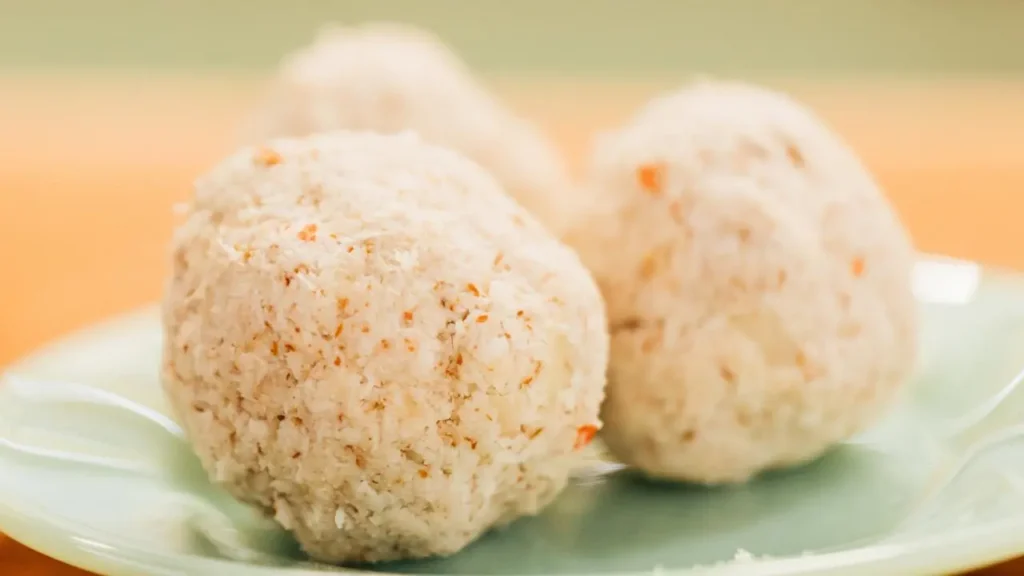
12) Coconut Choka
Coconut Choka is a flavorful dish enjoyed in Guyana. It uses simple ingredients that bring out rich tastes. The main ingredient is coconut, which is roasted to give it a nice, smoky flavor.
You start by cracking a coconut and removing the meat. Next, roast the coconut meat until it turns brown. The roasting process is crucial as it adds depth to the flavor.
Once roasted, grind the coconut meat with garlic, onion, and wiri wiri peppers. These ingredients blend together to create a spicy and aromatic mixture. A coffee grinder or masala brick can be used for grinding.
Mix in some salt to taste. This simple seasoning enhances the natural flavors of the coconut and spices. The end result is a slightly creamy and flavorful dish.
Coconut Choka can be served as a side dish or a dip. It’s a versatile food that goes well with many other Guyanese dishes. Its unique taste and easy preparation make it a popular choice in many households. Enjoy your Coconut Choka with friends and family.
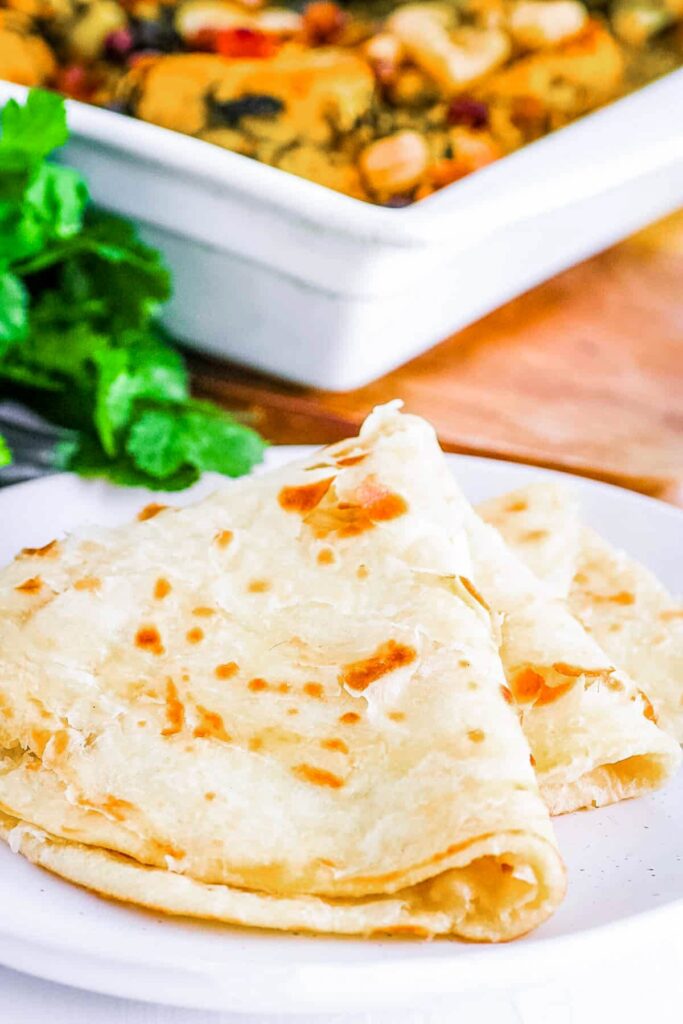
13) Roti
Roti, also known as oil roti or paratha roti, is a popular flatbread in Guyanese cuisine. You need a few basic ingredients like all-purpose flour, baking powder, salt, and oil.
Start by mixing the dry ingredients and gradually add warm water. Knead the dough until it’s smooth and pliable. Let it rest, as this helps achieve the right texture.
Divide the dough into equal pieces and shape them into small balls. Roll each ball on a lightly floured surface to create a thin, flat circle.
Heat a skillet or tawah to medium heat. Place the rolled dough on the skillet until it bubbles and cooks evenly on both sides. Brush it with oil for extra flavor.
Roti is often served with curries, stews, or even enjoyed on its own. The final product is soft and flexible, perfect for wrapping around various fillings.
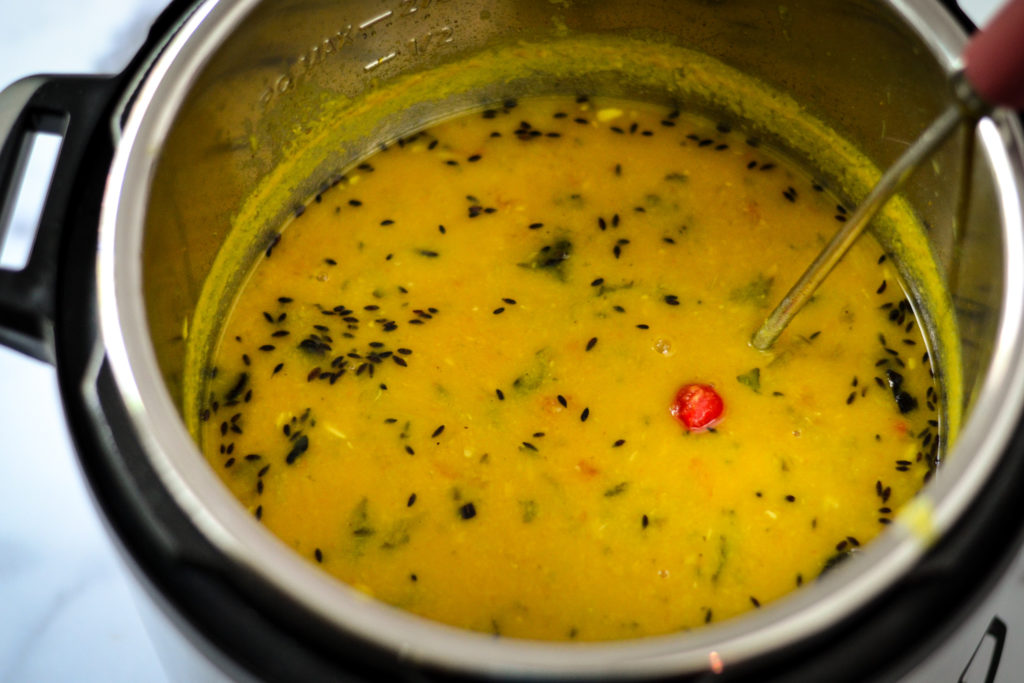
14) Dhal
Dhal is a popular dish in Guyana, made primarily from yellow split peas. It is seasoned with a mix of spices and can be either thick or thin, depending on your preference.
To start, rinse split peas and add them to boiling water. Chop onion, garlic, tomatoes, and wiri wiri peppers or scotch bonnets, and add to the pot.
Season your dhal with spices like cumin and salt. If you prefer a thicker consistency, let it simmer until it heavily coats a spoon. For a smoother dhal, use an immersion blender to blend the peas once they are tender.
In Guyana, dhal is often “chunkayed” after boiling. This involves toasting whole cumin seeds in oil until they turn dark brown, then adding finely chopped garlic until it is nearly burnt. Finally, mix this fragrant oil with your cooked split peas.
You can also make dhal using an instant pot. Start by using the sauté function to fry onions, garlic, and spices in oil. Then add split peas, tomatoes, and spinach before sealing the pot and cooking under pressure.
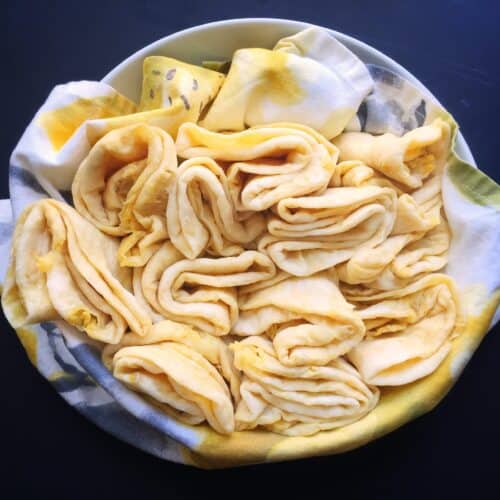
15) Dholl Puri
Dholl Puri is a popular Guyanese dish often enjoyed during family gatherings and festive occasions. This dish features a filling of seasoned split peas, which adds a rich flavor to the puri.
To make Dholl Puri, you start by preparing the split pea filling. Boil split peas until tender. Then, blend them into a smooth paste with garlic, cumin, and hot pepper.
Knead a simple dough using flour, water, and a pinch of salt. Divide the dough into small balls. Flatten each ball slightly and stuff it with the split pea paste. Carefully roll each stuffed ball into a thin, flat disk.
Heat a skillet or tawah over medium heat. Cook each puri on one side for about a minute. Flip it, brush it with oil, and cook for another minute. Flip it again and brush with oil on the second side.
Dholl Puri is best served hot. You can enjoy it with curries, stews, or even on its own. It’s a delightful treat that brings a taste of Guyanese culture into your home.
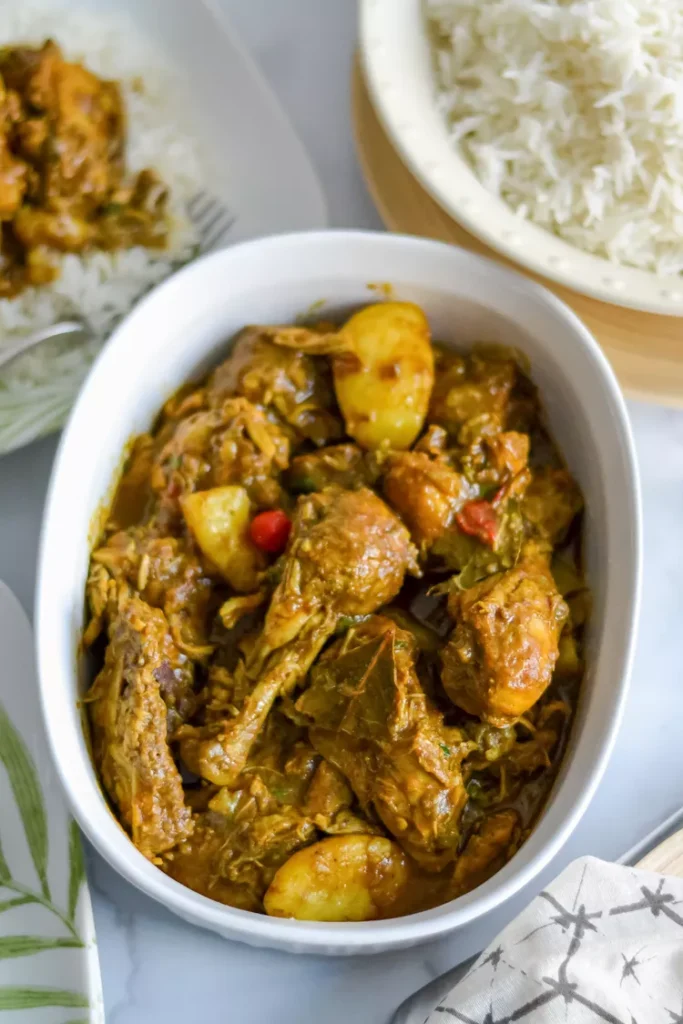
16) Bunjal Chicken
Bunjal Chicken is a popular Guyanese dish. It’s known for its rich flavors and spicy taste. The dish involves cooking chicken in a mixture of spices until the sauce thickens and clings to the meat.
To prepare Bunjal Chicken, start by seasoning chicken pieces with salt. Heat oil in a large pan and sauté diced onions until they are soft and slightly brown.
Mix curry powder, thyme, garam masala, cumin, and paprika in a small bowl. Add the spice mix to the onions and cook until the water evaporates and the mixture becomes thick and brown.
Add the chicken pieces to the pan. Stir often to coat the chicken evenly with the spices. Cook until the chicken is well done and the sauce is thick.
Serve Bunjal Chicken with dhal and rice or roti for a complete meal. The secret to great Bunjal Chicken is patience. Stir often and cook until the flavors meld perfectly. Enjoy the vibrant flavors of this Guyanese favorite.
Cultural Significance of Guyanese Cuisine
Guyanese cuisine reflects the country’s diverse cultural heritage and traditions. It showcases a blend of indigenous, African, Indian, Chinese, and European influences.
Historical Influences
Guyanese food has deep roots in the history of its people. Indigenous ingredients like cassava and plantains are staples, as they were used by the native peoples long before European contact. African slaves brought to Guyana introduced foods like black-eyed peas and okra.
Indentured laborers from India brought spices like turmeric and cumin, contributing to curries and roti now common in Guyanese cuisine. Chinese immigrants introduced fried rice and chow mein, which have become local favorites. These diverse contributions create a rich and varied culinary landscape.
Festive Foods and Traditions
Food plays a central role in Guyanese celebrations. During Christmas, the traditional Black Cake, a rich rum-soaked fruitcake, is a must-have. Easter is celebrated with cross buns, a spiced sweet bun with a cross on top.
Phagwah, the Hindu festival of colors, features sweets like gulab jamun and jalebi. At weddings, you’ll often find seven-curry, a platter with different types of curry served on a large leaf. These dishes not only mark special occasions but also preserve the cultural heritage of the nation.
Essential Ingredients in Guyanese Cooking
Guyanese cuisine is rich and diverse, utilizing a variety of spices, seasonings, and fresh produce. These ingredients form the backbone of many traditional dishes you might want to try.
Spices and Seasonings
Spices are crucial in Guyanese dishes. Curry powder, a mix of turmeric, cumin, coriander, and chilies, is commonly used in dishes like curried chickpeas or meat curries. Garam masala, a blend that includes cardamom, cloves, and cinnamon, adds depth to stews and rice dishes.
Thyme, cumin, and black pepper are also staples. Garlic and ginger are used frequently, providing a base flavor for many recipes. Wiri Wiri peppers, small and hot, are a must for adding heat and a distinct taste to food. Green seasoning, made from a mix of herbs, peppers, and garlic, is often used as a marinade or cooking base.
Fresh Produce and Proteins
Fresh produce like cassava, plantains, and sweet potatoes are central in dishes such as metemgee or ground provisions. These starchy vegetables are often boiled or stewed. Okra, eggplant, and pumpkin are also widely used, adding variety and nutrients.
Proteins such as saltfish and fried fish serve as common side dishes. Chicken, goat, and beef are frequently incorporated into stews and curries. Coconut milk is a key ingredient, enhancing the flavor and texture of many recipes like oil roti and stewed meats.
By understanding and using these essential ingredients, you can capture the authentic taste of Guyanese cuisine.
Cooking Techniques and Tips
Guyanese cuisine blends traditional cooking methods with modern techniques. Learn about age-old practices and how they have evolved today.
Traditional Cooking Methods
Guyanese cooking often uses open fire or stovetop techniques. Metemgee, a one-pot dish, is traditionally cooked over an open flame. This method allows the flavors of cassava, yams, and plantains to meld together. Consistent heat is vital to ensure the coconut milk and spices are properly absorbed.
Pepperpot, a renowned Guyanese dish, uses long, slow cooking. Often prepared in large pots, this method ensures the meat becomes tender. Adding cassareep, a syrup made from cassava, helps preserve the dish. This is essential, especially in tropical climates where refrigeration is limited.
Handmade tools like wooden spoons and mortar and pestle are commonly used. These are crucial for tasks such as grinding spices and mixing doughs for breads like oil roti. Simple, non-mechanical tools can extract essential oils and flavors from spices, enhancing the dish.
Modern Adaptations
In recent years, Guyanese cooking has adapted to modern kitchens. Pressure cookers and slow cookers make preparing dishes like Pepperpot quicker and easier. These appliances maintain the essence of slow cooking while fitting into a busy lifestyle.
For baking recipes, such as Guyana Sponge Cake, electric mixers replace traditional hand mixing. This modern adaptation saves time and ensures a more consistent batter, leading to better baking results.
Non-stick pans are now used for making roti and other flatbreads. These pans provide an even cooking surface, reducing the need for additional oil and making cleanup simpler. Using non-stick surfaces also helps achieve the characteristic flaky layers in Guyanese oil roti.
Incorporating modern appliances can also help replicate traditional flavors in urban settings. For instance, a blender can effectively grind spices in place of a mortar and pestle. This maintains the authentic taste while offering convenience.
